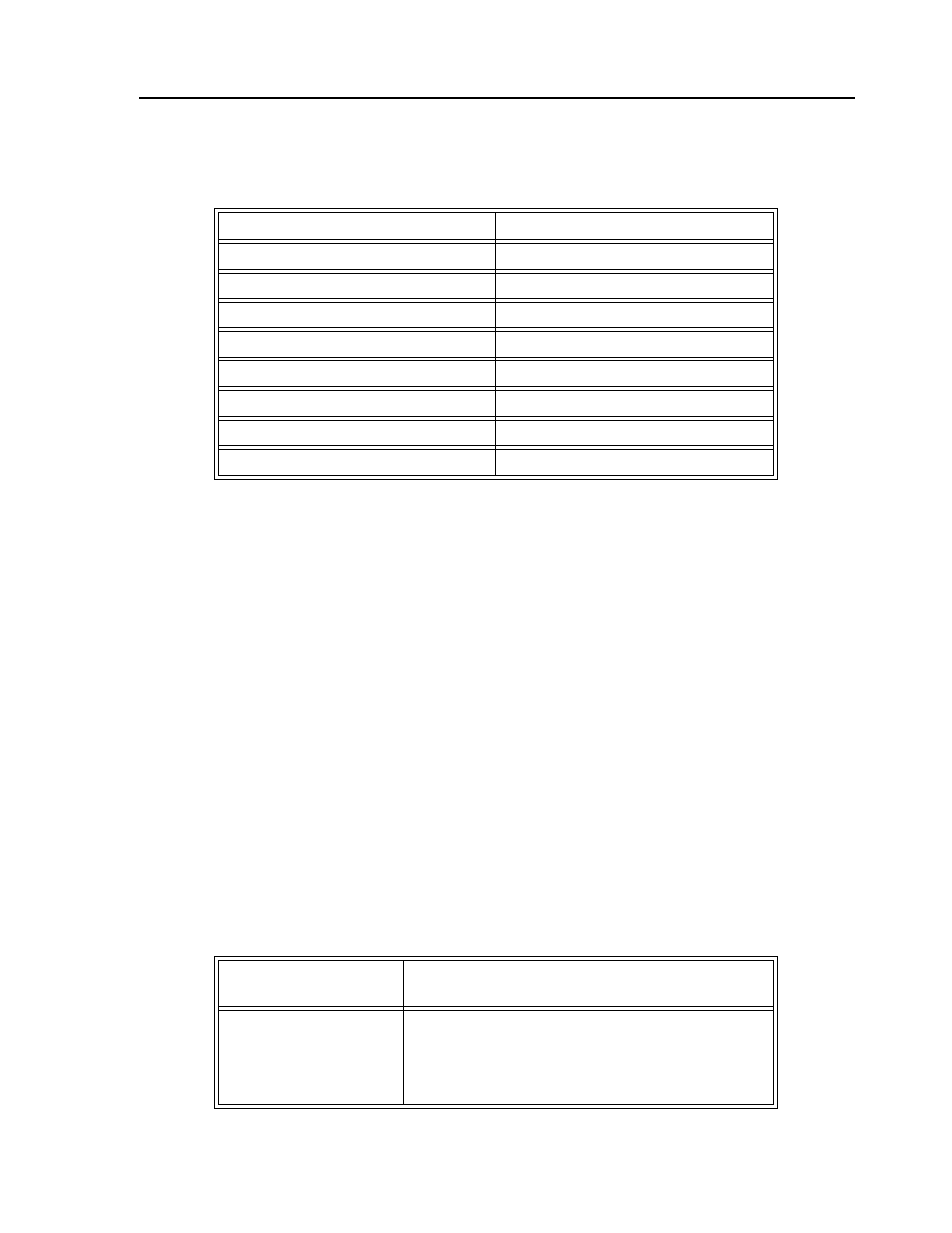Example, Qu array[ ],start,end,comma, Qd array[ ],start,end – Yaskawa LEGEND-MC User Manual
Page 317: Where array is an array name such as a, Start is the first element of array (default=0), Automatic data capture into arrays, Commands used

307
LEGEND-MC User’s Manual
An array element number can also be a variable. This allows array entries to be assigned sequentially
using a counter.
Example:
The above example records 10 position values at a rate of one value per 10 msec. The values are stored in
an array named POS. The variable, COUNT, is used to increment the array element counter. The above
example can also be executed with the automatic data capture feature described as follows.
Arrays may be uploaded and downloaded using the QU and QD commands.
QU array[ ],start,end,comma
QD array[ ],start,end
where array is an array name such as A[ ].
Start is the first element of array (default=0)
End is the last element of array (default=last element)
Comma -- if comma is a 1, then the array elements are separated by a comma. If not a 1, then the
elements are separated by a carriage return.
The file is terminated using
Automatic Data Capture into Arrays
The LEGEND-MC provides a special feature for automatic capture of data such as position, position
error, inputs or torque. This is useful for teaching motion trajectories or observing system performance.
Up to eight types of data can be captured and stored in eight arrays. The capture rate or time interval may
be specified.
Commands used:
#A
Begin Program
COUNT=0;DM POS[10]
Initialize counter and define array
#LOOP
Begin loop
WT 10
Wait 10 msec
POS[COUNT]=_TPX
Record position into array element
POS[COUNT]=
Report position
COUNT=COUNT+1
Increment counter
JP #LOOP,COUNT<10
Loop until 10 elements have been stored
EN
End Program
RA n[ ],m[ ],o[ ],p[ ]
Selects up to four arrays for data capture. The arrays must be
defined with the DM command.
RD_TI,_TPX,_SCZ,_TSY
Selects the type of data to be recorded. See the table below for
the various types of data. The order of data type is important
and corresponds with the order of n,m,o,p arrays in the RA
command. In this example, the _TI input data is stored in the
first array selected by the RA command.
